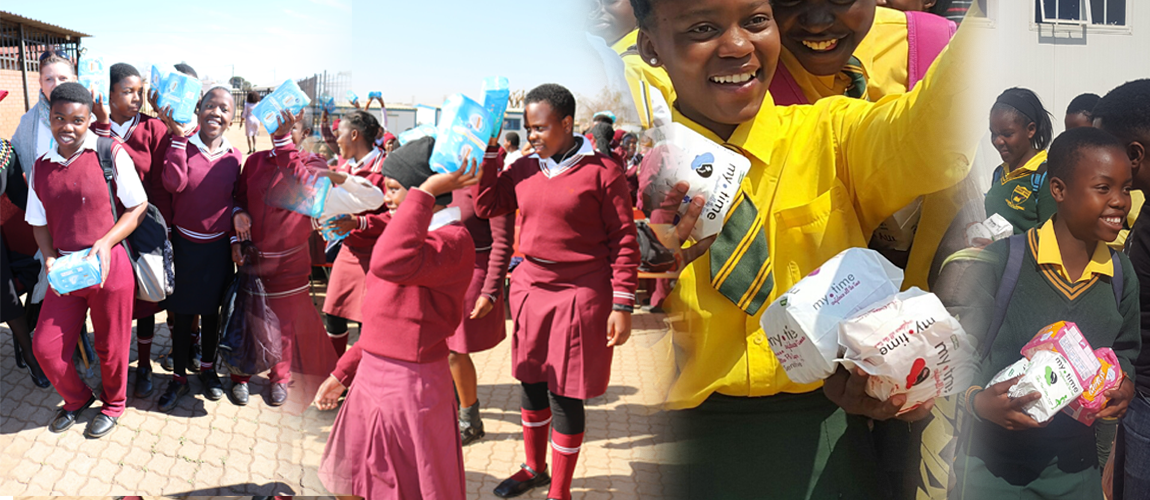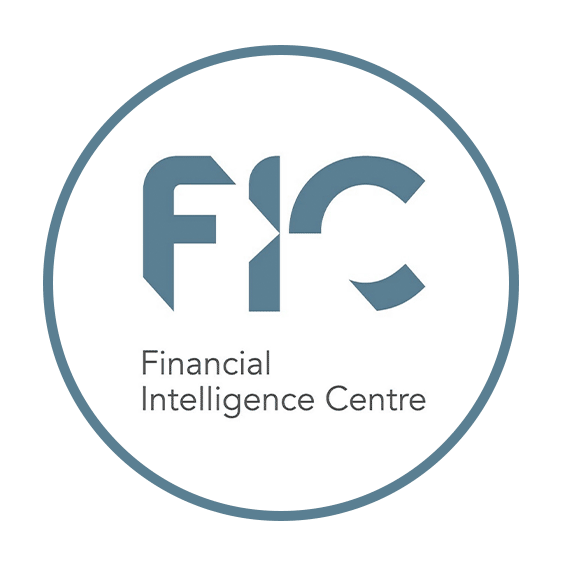Excitement and relieve filled many South Africans on 23 August 2020 when President Cyril Ramaphosa announced our move to level 2 of the national lockdown as part of the COVID-19 risk adjusted strategy. Much of the exhilaration stemmed from the possibility now of being able to visit family, go to parks and gyms and also travel between provinces among other things. This at a time when the Mint is starting to operate and more colleagues are returning to work brings hope that the year could still end on a positive note.
Covid-19 restrictions don’t mean a lockdown on performance, as shown by our August recipients of the Cheers4Peers awards. Congratulations to Carolina Naude (HR) for living the value of Service, and Lunga Mokwena (IMS) for living the values of Accountability and Service in these tough times, enjoy spending your R500 gift voucher.
Continue to give recognition where it is due, Minters! Nominate a colleague you believe is doing a sterling job in living our values, and by so doing, you are yourself setting an example of living our values.
While we celebrate the achievements of those who have done well at work this month, we are inspired by the achievements of a colleague who against all odds, received their qualification this month. Thomas shares an inspirational piece of how he, with the help and support of the people around him, overcame many obstacles to achieve this commendable milestone.
“Today by God’s grace, I am giving myself a birthday present. A birthday present which took me almost eight years to master and perfect. It was back in 2006, on this very same day 18th of August when I got a job to work as a delivery guy around Pretoria CBD, earning R300 per week. I delivered furniture in people’s homes and the interactions I had and the things I saw inspired me.
That prompted me to go back and register for a matric certificate in 2007. The only school that was in a position to accommodate me was ABET in Soshanguve because I had left school in my standard 6 year due to challenges I faced. For 10 years, I was at home chasing shadows, and I worked hard to pass with exemption that year. Seeing my name written in a newspaper for the class of 2007 was a feeling that I can never try to explain. When they say, “It runs in the family,” you tell them, “This is where it runs out”
In 2008 I got a job to work as a gardener and in 2010 I was employed by the South African Mint as a Plating operator. The requirement of the job at the Mint it was a matric certificate that I now hold. I then took my pay and went to UNISA to register for a DIPLOMA IN LAW and I never looked back ever since. There were many obstacles that I faced during my studies and many opportunities where there for me to give up because it was not comfortable to take almost all of your salary and pay for your studies and prescribed books. But I understood the quote that said; progress is impossible without change, and those who cannot change their minds cannot change anything. I realised that I have a great passion for change and I was willing to hold on, no matter how uncomfortable the process was. By doing exactly that, I am today a proud holder of a National Diploma in Law and a LLB degree.
Thank you to all who contributed to my life, be it directly or indirectly. As I began to understand the psychological impact of the African proverb ‘’It takes a village to raise a child’’ I saw that in my life personally. A number of people contributed to my life and journey immensely and I will forever be grateful to them. To my wife who was there when I had no shoes to wear, to Thomas Mkasi who gave me his shoes to wear, to my foreman at the South African Mint, Mr Matlou and my shift that were there for me in a number of ways. Thank you to my company, the South African Mint, for the study loan you gave me and the encouragement I got from you guys. I love you with all of my heart. South African Mint, I WILL FLY YOUR FLAG HIGHER!”
A team of South African Mint staff celebrated Womens’ month with the delivery of four months’ supply of sanitary towels for all the girls at the Olievenhoutbosch Secondary School on 31 August 2020. The girls at the Thembinkosi LSEN Secondary School received their one year’s? supply of sanitary towels from the Mint on Mandela Day in July. We are proud to play our part in keeping a girl child in school.
In terms of the FIC Act, The South African Mint and all our Authorised Dealers qualify as a “reporting institution” and have an obligation to report transactions as they relate to the Act. To the effect that the Act also addressed our dealers, we put in place the following measures to raise awareness on this issue: – The banner below was added to the Authorised Dealer page on our website
(https://www.samint.co.za/collectable-coins/authorised-dealers/):
– The following clause has been included in all dealer agreements since 2017:
“Despite the generality of clause 24.1, the Coin Dealer undertakes to comply particularly with domestic laws applicable to currency and counterfeit currency, exchange control, consumer protection, advertising and marketing, data protection, anti-money laundering, intellectual property, tax, insolvency, as well as anti-trust.
The Coin Dealer warrants, represents and undertakes to the Mint that, as at the Signature Date it is, and shall for the duration of this Agreement, and shall ensure that its personnel (where relevant) shall:
• always comply with applicable legislative requirements, which may include, but are not limited to:
• FICA Requirements and the reporting obligations related thereto;
• KYC principles set out in the FIC Act and obligations related thereto (to the extent that you are an accountable institution as contemplated in the FIC Act).
The Coin Dealer acknowledges that, to the extent that it deals in Krugerrand coins, it is a ‘reporting institution’ as contemplated in schedule 3 of the FIC Act and hereby undertakes to comply with the obligations applicable to reporting institutions as required by the FIC Act”.
– FICA Refresher Training for all the authorised dealers was held on 26 August 2020 by the South African Reserve Bank’s Risk Management team:

We have journeyed together through the history of the South African currency, and seen how our colleagues work to bring design to life, now we’d like to show you how we get from metal to money when making a collectable coin…
Production starts at the highly modern continuous casting furnace, where the raw materials are melted in the furnace and then cast through casting dies manufactured from very high-grade graphite. There are separate casting dies for 22ct, 24ct and silver.
The gold that is melted in the crucible is activated by a starter bar which is placed in the die, to which the liquid gold attaches and thus initiates the casting process.
As soon as the correct temperature is reached, the starter bar is withdrawn from the die very slowly, and as it is pulled out, the molten gold flows into the die and solidifies. The metal comes out in one thickness and is then rolled down, the result of which is a drawn bar.
After the casting process, the drawn bar is washed and then rolled on a rolling mill to the correct thickness for the coin that is being minted. On the mill, the drawn bar is passed between two rollers to form a strip. The strip length is increased as the thickness is decreased.
Two operators control this process manually, one placing the strip into the mill and the other removing the strip from the mill. This is done with extreme care to prevent surface contamination as well as to avoid scratches to the strip surface.
When the correct thickness is achieved, the strip is washed and inspected for any surface errors. Once it is inspected, the strip is then ready to be blanked.

During the blanking process, a blanking machine which is fitted with a punch and a cutter according to the specific diameter required, is operated manually by an operator. It is again very important that the strip be handled with extreme care so that the surface is not scratched and it can yield the maximum number of blanks possible.
Once the blanks are cut, they are individually inspected, looking at weight, diameter, and visual acceptance according to the requirements of the required coin to be minted.

Only 22ct gold and silver blanks go through this stage which uses an open-ended steel belt furnace, equipped with heating and cooling zones that are protected by a continuous flow of gas, called an annealing furnace. The coin blanks are placed in the annealing furnace to soften them (relieve stress).
After softening, the blanks are placed in a heated acid and water solution for 5 – 10 minutes to eliminate any surface contamination, and their hardness is tested. Thereafter, the blanks are ready to be polished.


The surface of each blank is then polished to a very high lustre to obtain an exceptional surface finish.
The blanks are packed in a special fixture to separate them from one another to prevent damage. This loaded fixture is then placed in a rotating, multi-sided tumbler, with a special soap and polishing media made of minute stainless steel balls of different shapes, after which the blanks are inspected again for flawless lustre and surface finish.
Should they pass the inspection, they are individually hand-dried (between two towels) and packed in a special tray, and are now ready for the coining process.
In the coining process the blank is struck with two dies simultaneously, one for the obverse coin face and the other for the reverse coin face.
The coining operator individually selects each blank, and feeds it into the coining press, which contains multi-stroke 200 – 260ton knuckle presses, and a serrated collar which restricts the sideways flow of the material.
The blank is then struck between three and five times, depending on the diameter and detail of the coin being minted. After the coin is struck, the operator removes it and inspects it under a magnifying glass before and placing it on a special storage tray.
Some coins are also encapsulated at this stage. The dies are then cleaned with a special soft cloth to remove any residue from the die faces first before the next blank can be struck. The coins are now ready to be packed according to specific packaging requirements.
Did you know: Circulation coins are struck once under normal pressure and a high rate of speed, as they need to be produced in large quantities in accordance to the demands of a country. Collectable coins in contrast, are usually struck at least twice, under high pressure in order to bring out all of the details in the design as they draw their charm from the immaculate representation of the design, as well as the limited quantities they comes in.

Packing is the last phase before a coin is ready to be sold. Also a manual process, packers begin by conducting a final inspection of the coins.
The approved coins are then placed in different packaging created to compliment the coin theme as well as appeal to collectors. Some are even accompanied by value adding items in the packaging such as medallions or miniature models.

According to the Britannica Kids Encyclopedia, manufacturing is the process of making products, or goods, and the businesses that make products are called manufacturers. Why not turn your kids into manufacturers with this fun activity to make their own coin bank, following various steps. Simply download, print and watch them have fun ‘manufacturing’ their own product!
Click here to download the coin bank activity…
Many treasure and glory hunters alike believe that the hoard of gold hidden in South Africa by former President Paul Kruger to avoid being appropriated by the British during the Second Boer War was removed, however no accurate account has ever been produced of its fate. Next month we tell you more about a hoard of gold in our possession, and how you too can own this very special piece of history…


















